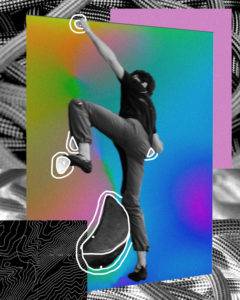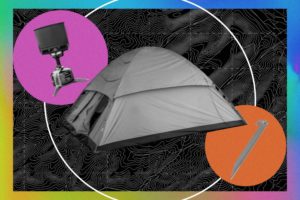3D Printed Equipment: A New Trend in the Outdoor Industry?
Outdoor equipment is constantly evolving and improving. It is one of my favorite aspects of outdoor recreation. New and innovative strategies to make gear lighter, stronger, safer, and more durable are constantly being developed and released every year. For me, it’s exciting to walk around a local gear shop and admire how technology has improved backpacks to redistribute weight better since I last bought one 5 years ago, or how skiing, biking, and climbing helmets are reducing concussions with the addition of MIPS and other internal membrane systems. The developments in the space are exciting to say the least.
One such development in recent years that could become increasingly popular is the integration of 3D printing into outdoor equipment across the board. 3D printing has already influenced and been used in numerous industries such as construction, aerospace, and medicine. Now it is making its way into the outdoor sports and recreation industry.
Already, we can see some sporting companies using the technology in their products this year. Two significant examples of this are Smith Optics and Adidas; Smith Optics created the I/O MAG Imprint 3D Goggles, which applies 3D printing to the frames of the goggles, while Adidas released the 4DFWD running shoes which feature 3D printed soles. And this is just the beginning. There is a multitude of start-up companies utilizing 3D printing technology to varying degrees to produce ski boots, helmets, prostheses for adaptive sports, camping accessories, climbing holds, bike fittings, kayaks, surfboards, and much more. With this in mind, what are some of the impacts and advantages this will have on the outdoor sports industry?
Reduced production time and material wastage

3D printing allows for prototypes and products to be made onsite; no sending over designs and models to a factory, waiting for production, and having them shipped back, which can take up to weeks. Instead, companies can send their design to an onsite 3D printer and have it in as quickly as a day, allowing for more time to test, research, and refine. This allows companies to be more efficient in their design process.
3D printing also prevents material wastage; it uses a precise amount of resources per piece, leaving fewer scraps behind. It also can create a strong internal structure that reduces the materials in general. For example, some companies are using a 3D-printed hexagon structure inside surfboards to avoid using foam. The resin covering the board then leaves clear air pockets inside. The efficiency of design and materials are strong reasons why outdoor companies are beginning to look into this technology.
Increased safety
Efficiency is far from the only advantage luring in outdoor companies; 3D printing is also improving equipment safety. One major example of this application is using 3D printing in bicycle helmets. Not only does the structure allow for better impact control and redistribution, but it allows for custom fits so that the helmet does not move on impact. This could begin to be utilized for ski helmets and climbing helmets too. And as this technology continues to be improved, it could be applied to other forms of safety gear in outdoor sports, such as mouthpieces and pads. Not only this, but 3D printing permits for easier experimentation of materials. In general, 3D printing open the doors to new solutions for minimizing the risks we take while participating in things like skiing, mountain biking, and climbing.
Easier access to sports

A major benefit of 3D printing to the user of these products is reduced prices. As previously mentioned, there is greater efficiency in production and material usage, reducing the companies’ costs to output a product and lowering the sale cost for the consumer. In terms of improving accessibility to the outdoors for all people, this is a big upside.
Not only is cost decreased, but the customizable nature of 3D printed products means that equipment can also be tailored to disabled athletes, expanding the accessibility of the outdoors even further. Now, things like prostheses can be custom fitted and designed specifically for the sport of interest and at a fraction of the cost. Overall, 3D printing may allow for more people to enjoy the great outdoors.
Reduced environmental impact
As touched upon earlier, 3D printing can also help in reducing outdoor companies’ environmental impact. Currently, some of the results of typical production include waste, depletion of resources, and CO2 emissions. In particular, 3D printing helps with these issues by being less wasteful and reducing transport. Transporting products gives off high amounts of carbon emission, but when 3D printing is done onsite, this is greatly reduced.
Another consideration is the resilience of products. Parts can be individually produced to replace pieces that get broken, improving the lifespan of the product as a whole. 3D printing also requires fewer parts for a product in the first place, so there are fewer pieces to break. Furthermore, 3D printers can use recycled materials like plastic waste for designs, again helping to offset environmental impacts.
Customization of products

Lastly, 3D printing allows for greater customization across the board. Mass-produced equipment doesn’t always work well for everyone, but often customization raises the price of gear. However, 3D printing lowers the cost of customized equipment like ski goggles, helmets, boots, shoes, handlebars, and grips.
3D technology is still growing and advancing in many ways, but considering the benefits of its applications, it is reasonable to expect 3D printed equipment and gear will become much more prominent within the outdoor industry. Outdoor companies are constantly working to increase efficiency, safety, accessibility, and environmental awareness of their products, so it is only natural that they will continue to explore 3D printing. I for one am excited to soon be walking through an REI, Level 9, or Evo and see the applications companies come up with for this technology and to see how it improves our overall experience in the outdoors.



